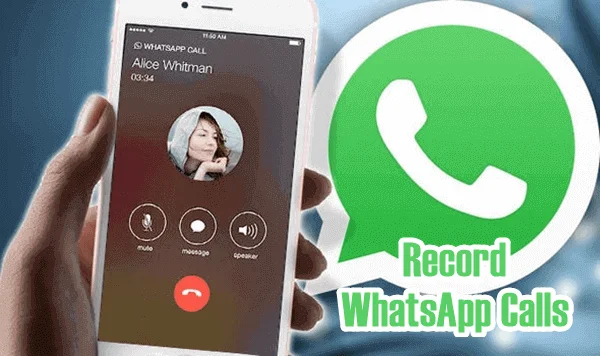Introduction
In the digital age, staying connected has never been easier, thanks to video calling. Whether you’re catching up with friends and family or attending a virtual business meeting, video calls bridge the gap. But what if you need to keep a record of these calls? Enter screen recording. Let’s dive into how you can master both.
Understanding Video Calling
History and Evolution of Video Calling
Remember when video calls were something out of a sci-fi movie? Fast forward to today, and they’re as common as texting. From the early days of clunky webcams to sleek smartphones, video calling has come a long way.
Different Platforms for Video Calling
There are numerous platforms out there: Zoom, Skype, Microsoft Teams, Google Meet, and many more. Each has its quirks, but all serve the same purpose – connecting people face-to-face, virtually.
Benefits of Video Calling
Personal Communication
Video calls allow us to see and hear loved ones, making long-distance relationships feel a bit shorter. It’s the next best thing to being there in person.
Professional Communication
For businesses, video calls have revolutionized meetings, interviews, and even remote work. They offer a personal touch that emails and phone calls just can’t match.
Essential Features of a Good Video Calling Platform
High-Quality Video and Audio
Crystal clear video and audio are a must. You don’t want to miss a word or facial expression due to lag or poor quality.
User-Friendly Interface
An intuitive interface ensures that everyone, tech-savvy or not, can join and navigate calls without hassle.
Security and Privacy
With cyber threats on the rise, a secure platform that protects your data is crucial.
Choosing the Right Video Calling Platform
Comparison of Popular Platforms
- Zoom: Great for large meetings with robust features.
- Skype: Perfect for one-on-one calls and small groups.
- Microsoft Teams: Ideal for corporate environments with integration into Office 365.
- Google Meet: Convenient for those already using Google Workspace.
Factors to Consider
When choosing, think about your specific needs: number of participants, type of calls, and any necessary integrations with other tools.
Introduction to Screen Recording
What Is Screen Recording?
Screen recording captures what’s happening on your screen, often with accompanying audio. It’s like having a digital camcorder for your computer screen.
Importance of Screen Recording in Modern Communication
From tutorials and presentations to record-keeping and content creation, screen recording has become a vital tool.
Benefits of Screen Recording During Video Calls
Record Keeping
Screen recording provides a detailed account of meetings, useful for future reference and accountability.
Training and Development
Recorded calls can be used as training material, offering real-life examples and scenarios.
Content Creation
For content creators, screen recording allows you to capture gameplay, tutorials, webinars, and more.
How to Choose the Best Screen Recorder
Essential Features
Look for features like HD recording, ease of use, editing tools, and secure storage.
Popular Screen Recording Tools
- OBS Studio: Open-source and versatile.
- Camtasia: User-friendly with powerful editing tools.
- Loom: Great for quick, sharable recordings.
Step-by-Step Guide to Setting Up a Video Call
Choosing the Platform
Select a platform that fits your needs, whether it’s for personal or professional use.
Setting Up Your Account
Most platforms require an account. Set this up beforehand to avoid any last-minute hiccups.
Testing Your Equipment
Ensure your camera, microphone, and internet connection are all functioning properly. A quick test call can save a lot of headaches.
Step-by-Step Guide to Using a Screen Recorder
Downloading and Installing the Tool
Choose your screen recorder, download it from the official site, and follow the installation instructions.
Configuring Settings
Adjust settings for video quality, frame rate, audio input, and output directories according to your needs.
Starting and Stopping the Recording
Begin recording just before your video call starts and stop it once the call ends. Some tools offer hotkeys for easy control.
Tips for a Successful Video Call
Preparing Your Environment
Find a quiet, well-lit space. Eliminate background noise and distractions. Your background should be tidy and professional, especially for work calls.
Technical Tips
Use headphones to avoid echo, and ensure your camera is at eye level for a more natural look. A stable internet connection is a must.
Communication Tips
Speak clearly and at a moderate pace. Make eye contact by looking at the camera, and use gestures to enhance communication.
Common Issues and Troubleshooting
Video and Audio Problems
Check your settings and ensure all devices are properly connected. Restarting your device can also resolve many issues.
Connectivity Issues
If your internet is unstable, try using a wired connection or moving closer to your router.
Recording Issues
Ensure your screen recorder is running with the necessary permissions and has enough storage space.
Advanced Tips for Screen Recording
Editing Your Recordings
Use built-in editing tools or external software to trim, cut, and enhance your recordings.
Sharing and Storing Recordings
Upload recordings to a secure cloud storage service for easy access and sharing. Platforms like Google Drive and Dropbox are popular choices.
Best Practices for Privacy and Security
Protecting Your Data
Use encrypted platforms and strong passwords. Be mindful of sharing recordings, especially those containing sensitive information.
Ethical Considerations
Always inform participants when recording a call. Respect privacy and use recordings responsibly.
Conclusion
Mastering video calls and screen recording can significantly enhance your personal and professional communication. With the right tools and practices, you can ensure high-quality, secure, and effective interactions.




